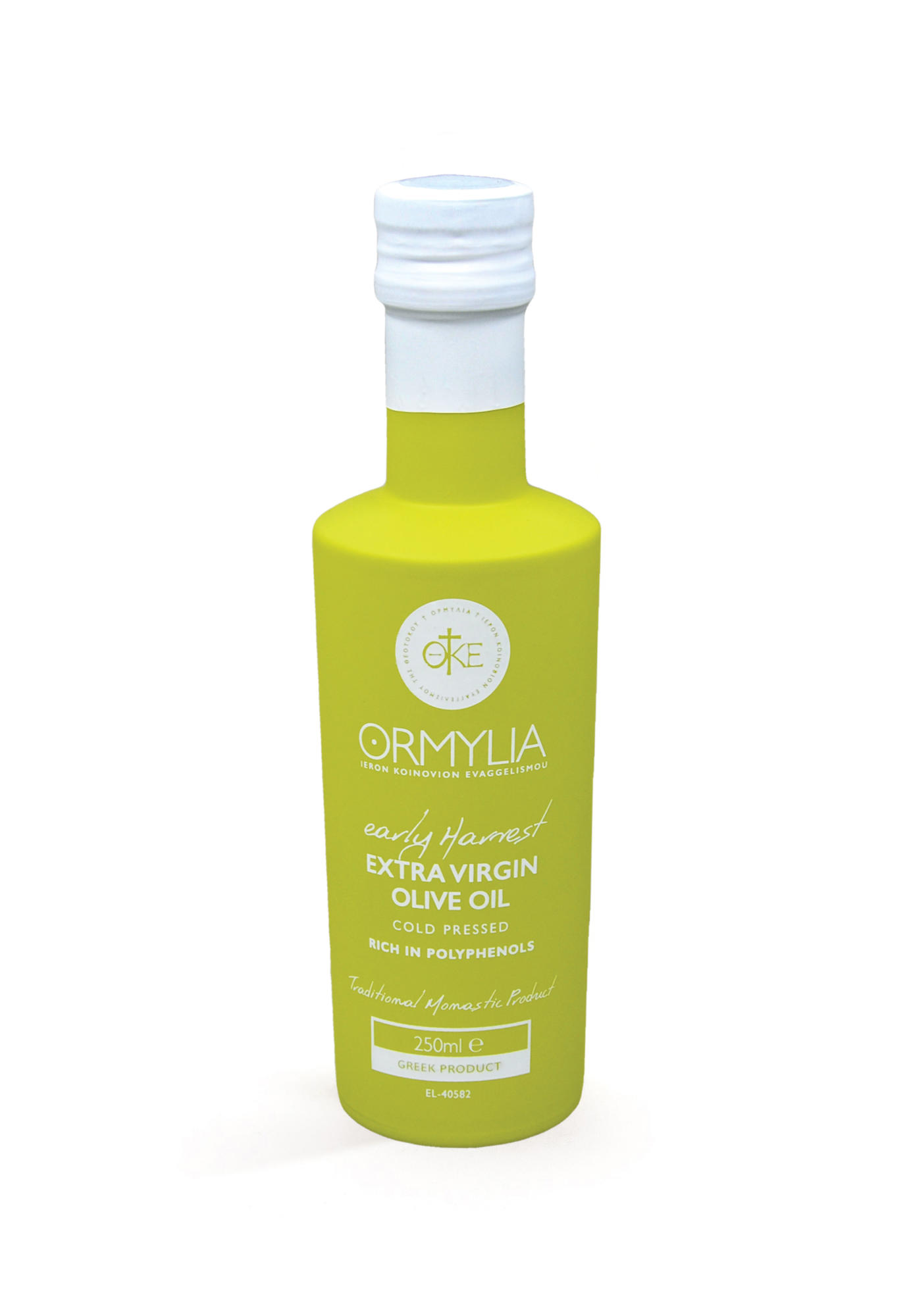Description
Early harvest olive oil is produced by unripe, green olives. It has an intense green colour and a more bitter, spicy, and fruity taste. The ancient Greeks called it omotrives or omfakio. As a rule, it is also an extra virgin olive oil, but it is different to those produced from ripe olives. In relation to ripe extra virgin olive oil, early harvest oil has a longer shelf life and richer in vitamins, minerals, and polyphenols, which protect our cells from free radicals.
More specifically, according to scientific research, early harvest oil has a greater content of two substances of great pharmaceutical interest: oleosin and oleocanthal. On the one hand, oleosin is a truly powerful antioxidant substance, while oleocanthal has anti-inflammatory and neuro-protective properties. These two substances do not exist in any other food and the only source of intake is extra virgin olive oil; more specifically, early harvest oil.
The main fatty acid in early harvest oil is oleic acid (omega-9). It also contains linoleic acid (omega-6), alpha -linolenic acid (omega-3), and arachidonic acid (omega-6), as well as carbohydrates, the most important being squalane. There is also an intense presence of sterols, alcohols, and carotenoids, such as lycopene and beta-carotene (vitamin A).
It antioxidant action is further strengthened by the increased presence of tocopherols, dominated by alpha-tocopherol (vitamin E), as well as polyphenols.
That is why modern medicine recommends it in many cases. It lowers cholesterol it acts as an antioxidant, and protects from cancers, it helps with liver function and is ideal for the diet of people with diabetes and heart disease.
The early harvest oil produced at the Convent is of exceptional quality and contains very high values of oleosin and oleocanthal, according to research carried out by the National Kapodistrian University of Athens.
